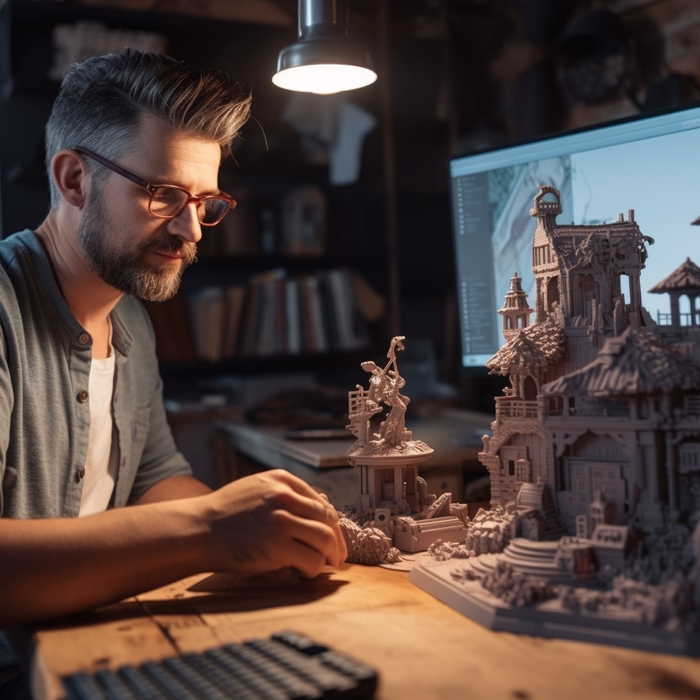Introduction:
Embarking on the exciting journey of 3D modeling opens up a world of possibilities for creating unique and captivating designs. Whether you're interested in prototyping, custom figurines, or artistic creations, understanding the basics is key to achieving stunning results. This blog post will provide a step-by-step guide for beginners on designing remarkable 3D models. So, let's dive in and explore the fascinating world of 3D modeling!

Step 1: Conceptualize Your Design
Before diving into the digital realm, having a clear vision of your design is essential. Start by sketching your idea on paper or using digital sketching software. Visualize the shape, size, and intricate details of your model. This initial brainstorming process helps you define the direction of your 3D modeling project.
Step 2: Choose the Right 3D Modeling Software
The next step is selecting the appropriate 3D modeling software that suits your needs and preferences. There are various options available, each with its own set of features and learning curves. Popular choices include Fusion 360, Blender, SketchUp, and many more. Research and experiment with different tools to find the software that aligns with your goals.
Step 3: Begin Modeling Your Design
With the software selected, it's time to bring your design to life. Start by creating basic shapes and gradually add more complexity. Familiarize yourself with essential tools like extrusion, scaling, and Boolean operations. Practice is key, so don't be afraid to experiment and refine your skills along the way.
Step 4: Refine and Optimize Your Model for 3D Printing
Once your design is complete, it's important to ensure that it's optimized for 3D printing. Check that your model is manifold, meaning it's a solid object with no errors or holes. Pay attention to wall thickness, overhangs, and support structures if needed. This step is crucial for a successful print.
Step 5: Export Your Model in the Appropriate Format
When your design is ready for printing, export it in the suitable file format for your 3D printer. Common formats include STL (Standard Tessellation Language) and OBJ (Object File Format). These files contain the necessary information for slicing software to generate the instructions for your printer. Double-check the scale and orientation before exporting.
Step 6: Prepare Your Printer and Start the Print
With your exported model in hand, it's time to prepare your 3D printer. Follow the manufacturer's instructions for loading the filament, setting the print parameters, and initiating the print job. Patience is essential, as some prints can take hours or even days depending on the complexity of the design. Enjoy the exciting process of seeing your creation come to life layer by layer.
Conclusion:
Congratulations! You've completed our beginner's guide to designing stunning 3D models. By following these step-by-step tips and techniques, you're well on your way to creating remarkable 3D prints. Remember to start with a clear design concept, choose the right software, practice your modeling skills, optimize your design for 3D printing, and enjoy the printing process itself. With each project, you'll gain experience and refine your skills, unlocking new possibilities for your future creations. So, let your imagination soar and embrace the incredible world of 3D modeling!
